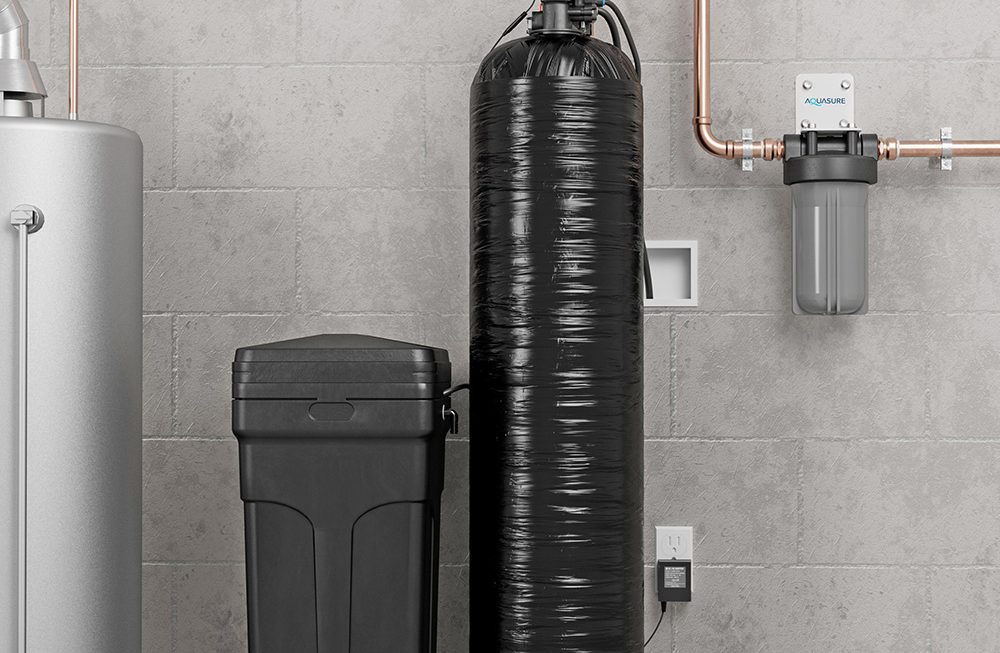Were you aware that one of the most common causes of water damage in the home is an HVAC condensate drain malfunction?
Most homeowners do not pay attention to what the condensate drain is doing or they may not even know what it is for, which is fine if it works correctly. If it starts malfunctioning, however, it can mean big problems.
To make sure that you know the signs of trouble to look for and what you need to do if you detect an issue, read on.
What Is an HVAC Condensate Drain?
Before tackling what can go wrong with this part of your air conditioning system, you need to know what it is and how it works.
When your HVAC unit is running, it produces condensate, which is a fancy word for water vapor that has been condensed into liquid. This is something the evaporator coil causes when the vapor comes into contact with it.
If the HVAC condenser and its drain are working correctly, this liquid is guided down to your home’s drainage system by the HVAC condenser line. If it is not, all of that condensate can end up in your home.
That means gallons and gallons of water that can cause water damage and can allow mold to grow. To prevent this, learn about some of the most common issues you can run into with your HVAC condenser unit and how you can tackle them.
Algae or Mold Growth
Algae and mold grow in humid and warm conditions and that is exactly what the condenser drain offers. It is a rich environment for these organisms, which can cause them to spread until they block the drainage.
Not only do they make the condensate not drain efficiently, but mold and algae can infiltrate your home’s air, causing all manner of health issues.
If you start smelling a musty odor when your HVAC unit is on, this can be a sign of algae or mold. You can usually deal with this issue on your own by turning the unit off and flushing the drain line with bleach or vinegar. Rinse it with water once you are done and turn the unit back on.
It can be a good idea to flush the drain line every month or so to prevent this kind of buildup.
Clogging
Apart from mold and algae, there are other things that can cause clogs in the HVAC condensate unit.
Dirt and debris can enter the air handler, which is the collection of coils that lines the unit, and end up on the evaporation. As the liquid, or condensate, drips down into the drain, it can carry this dirt and debris with it.
The mixture of water and dirt can cause clogs in the drain and cause the condensate to overflow.
If you see that your HVAC unit is shutting off repeatedly on its own or if you see water leaking from the unit, this can mean you have a clog on your hands.
To attempt to find and remove the clog, you want to turn the unit off and start checking the tubing. Drain the water from the pan and clear the drain. To make sure that you will not run into more issues, you can prepare a mix of one part water and one part bleach and pour it into the pipe.
HVAC Condensate Trap Issues
The condensate trap, also known as a P-trap, prevent air from rushing in or out of the air handler. A p-trap that does not work correctly will allow air that has not been filtered into the unit and can cause the condensate drain to overflow because it cannot keep up.
An HVAC condensate trap that is malfunctioning can also soak the components of the unit that are close to the drain.
On the opposite end, you can also run into traps that go dry. If your condensate drain leads down to the home’s sewer line, you need a bit of water to work as a seal and protect from sewer gases. When the trap goes dry, this seal is gone, allowing foul odors and bacteria to make it into your home.
If there are unpleasant smells coming from the HVAC system condenser unit, it can be time to consult a technician. This is usually a job that is better left to experts.
Malfunctioning Drip Pan
The drip pan does what its name suggests: catches the dripping condensate that comes off the evaporator coil.
Pans can get full if there is a drain line that is leaking. This tends to be a bigger problem with pans made of plastic, since they can crack and even warp with time.
A sign that the drip pan is not working correctly is if you see water pooling around the air handler. To tackle a leak, you want to turn off the unit, drain the pan, and find the source of the leak. If you cannot identify where the issue is, turn to professionals.
Pump Fails
The HVAC condenser pump removes the liquid condensate and pumps it out so that there are no issues with overflowing pans. If this pump fails, the pan floods, and you end up with a lot of water on your floors.
If you start finding water around the unit or if you start hearing loud gurgling sounds, there is an issue with the pump.
The pump can have algae issues which you can fix by cleaning it, or it can even suffer clogs. You want to inspect the pump and look for any obstructions. If you cannot find any, call the experts for help.
When in Doubt Contact Experts
Your HVAC unit is a crucial part of your home and you do not want to risk any serious damage. If you are not sure what is causing HVAC condensate drain issues, you need to call experts for help.
To learn more about how to keep your home’s units working efficiently, look through our Home Improvement pages!












